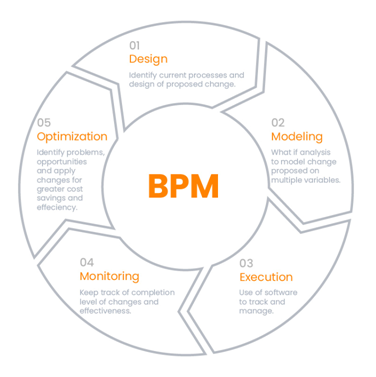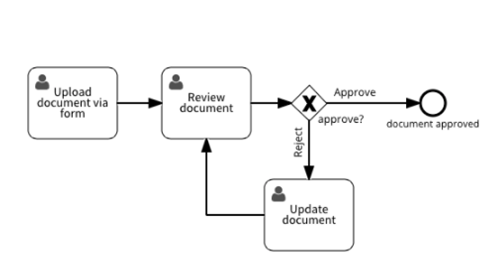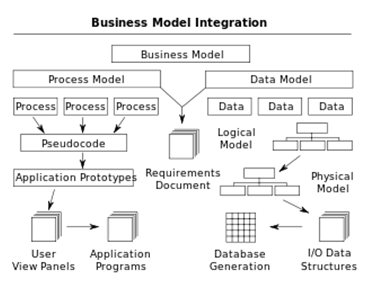Business Process Management Assignment: A Journal Article Review
Question
Task: For this business process management assignment you will prepare a report or critique on an academic paper related to Business Process Modelling or Business Process Management.
Answer
1. Introduction
Technology hasimproved the way for business organizations across various economies to cater to strategic managerial systems where they can aim to improve the effectiveness and efficiency of the business and serve towards the needs of the customers in a better manner. Similarly, business organizations cater to a discipline known as Business Process Management (BPM) which involves a combination of modeling, automation, execution, control, optimization, and measurement of the business activities to meet the goals and objectives set by the business organization [2]. BPM that is “Business Process Management”caters to the interconnection of employees, customers, spanning systems, and business partners that go beyond the business enterprise's boundaries as the BPM aims to document, review and amend a particular business process [3].A major aspect of the Business Process Management is that it helps the business organizations to map out the inefficiencies within the management of the organization through which the essential scopes for improvement in operations can be triggered. It is an effective tool adhered to by the management of the business organizations to reduce overall costs and implement effective decision-making strategies through which the businesses can aim to enhance their brand reputation and market share within the working community [9].
This report aims to discuss the business process analysis that identifies the workflow of the business process and also analyses the business process management model/ tool based on the selected journal and recommendations about appropriate managerial levers for improving such aspects have also been discussed.

Figure 1: Essential steps of the BPM
Source:Inovaprime, 2020
2. Business Process Analysis
Business Process Analysis (BPA) is a set of procedures where the management of various business organizations aims to understand and analyze the key aspects that can help to improve the effectiveness and efficiency of the business [4]. The Business Process Analysis requires the summation of various processes involved within the business organizations which are the parties participating, information which is exchanged, and the documents which have been processed and produced. Companies that engage in consultation services and trade benefit from the Business Process Analysis framework where they can document implicit knowledge within the business organization and aim to process documented and non-documented process manuals within both the private and public sectors [5].
2.1 Benefits of the BPA
The key benefits that the Business Process Analysis are the following:
- Helps the business organizations to make the best use of the knowledge information systems where implicit and explicit sources of knowledge are transferred between the customers and the parties involved in the business organization [6].
- Helps the business organizations to analyze key aspects of development through individual actions of various departmental heads where the documents and data involved with trade (international/domestic), commercial transport, regulatory and financial procedures are segmented and evaluated whether optimum utilization of services takes place or not [7].
- Helps the business organizations to locate and map out the key problem areas such as inefficiencies that occur within the working community. Such inefficiencies may be in the form of delays of moving goods from the seller to the buyer, unnecessary documentation procedures involved with overseas transactions and logistics, and repetitive data elements that hinder the effective productivity of the business organization [8].
3. Business Process Modeling/ Management
Business Process Management works in many forms but some of the processes can be automated through which certain aspects of human thinking and input helps to make better managerial decisions within the working community [11]. All business organizations must adhere to the following three types of Business Process Management models for achieving effective and efficient results:
3.1 Document-centric BPM
This particular model states that for any process related to the operations of a business organization starts with a core document through which the various decision-making aspects rely on [10]. The goal of the process is to send particular documents to various departmental heads within the business organization through which each departmental heads check off and agree with the guidelines that the management has set and this results in maintaining a sense of open-ended communications along with the prevention of loss of documents within the content drives amidst other important document files within the organization [12]. For example, the budget approval systems that are adhered to by the business organizations need to be passed on to various departmental heads so that these heads can engage in a flexible decision-making process that helps them to adhere to a form of optimum utilization of resources [13].Therefore, similar documents are shared by the management towards the various departmental heads through which an effective chain of command as well as communication is generated within the working community and such instances help to prevent aspects of errors and wastes within the organizational structure of the business [1].

Figure 2:The workflow process of the Document-centric BPM
Source:Mendling, 2017
3.2 Human-centric BPM
In this particular process, the management of the business organizations has to cater to their most important form of capital; human capital. The individuals and groups of individuals within the working community engage in a brainstorming session where key decisions are taken by them to decide what happens after each operational step within the business organization [14]. The form of automation within the working community is somewhat limited in this particular Business Process Management model as the humans have to make key managerial decisions based on the inputs and outputs procured by them in the operational process of the business [15].For example, the manager of a business organization requires an additional employee for which the request is passed down to the human resources (HR) department where the HR executive posts the job opening on various suitable platforms and starts screening for candidates suitable for the job. This particular process aims to make the managerial structure human-friendly [16].
3.3 Integration-centric BPM
In the Integration-centric BPM model, the management of business organizations focuses on creating a smooth flow of essential data through the help of various software tools [17]. Cloud-computing software is the most popular mode of operations within this Business Process Management model where a sense of automation is created that helps to eliminate increased manual labor and aim to achieve higher productivity levels within the business organization [18]. For example, the connected tools and systems that the business organizations use for their marketing and sales promotion campaigns are a part of the Integration-centric BPM. Here, the business organization caters to analytics tools such as Big Data and Customer Relationship Management (CRM) processes through automated customer assistants to help to serve towards the needs of the customers effectively and efficiently [19]. The information gathered from such tools is passed on to the sales and marketing teams where an analysis is drawn upon the various strategies that would be effective for selling a product within a market.

Figure 3: The workflow process of the Integration-centric BPM
Source:[22]
4. Insights/ Recommendations
The business organizations that fail to effectively secure a proper form of Business Process Management, notice that there are certain operational inefficiencies within the business organization [21]. Such inefficiencies can trigger incremental operational costs and reduction of revenues and profitability for the business for which the management of the businesses must streamline their operational aspects through an integrated approach of connected individuals within the management who can aim to improve certain key aspects of the organization towards the attainment of optimum utilization of resources [20]. Hence, the three-part model of the document-centric, human-centric, and integration-centric Business Process
Management can help the business organizations to provide insights as to how the business model of the organization can be moderated to improve the productivity levels of the various departmental heads.
Therefore the management of the business organizations must map processes, analyze the processes, redesign the process if required, and essentially acquire resources through which they can aim to implement to a form of change of communications [1] and enhance their business activities. After each of the integrated processes that are adhered to by the management of the business organizations, an overall review of the processes must be demonstrated where the changes are noted; such changes help to conclude whether the business processes within the organization brings a positive outcome towards the inputs that have been secured [23]. However, the change and implementation of an effective Business Process Management will need to be efficient so that the execution of such processes do not take prolonged periods of time; prolonged periods essentially means that the business loses a ton of resources incrementally through their operations which makes the business not feasible to operate within a chosen market [24].
5. Conclusion
This report provides an analysis of the key aspects of the Business Process Management systems which need to be adhered to by every business organization that operates on a global scale. The key benefits of the BPM as well as an analysis of a three-part BPM model have also been provided in the report which provides key insights as to how the businesses can aim to reduce their operational inefficiencies within their managerial structure. This report summarizes the key insights of the BPM processes where an analysis is drawn as to how such processes can be beneficial for the individuals and groups of individuals within a working community.
References
[1] Neder, R., Ramalho, P., Rabelo, O., Zambra, E., Maciel, C. and Benevides, N., Business Process Management: Terms, Trends and Models.
[2] Chang, J. F. (2016). Business process management systems: strategy and implementation. CRC Press.
[3] Del Giudice, M., & Al-Mashari, M. (2016).Discovering the Internet of Things (IoT) within the business process management: A literature review on technological revitalization. Business Process Management Journal.
[4] Hammer, M. (2015). What is business process management?.In Handbook on business process management 1 (pp. 3-16).Springer, Berlin, Heidelberg.
[5] Harmon, P. (2019). Business process change: a business process management guide for managers and process professionals. Morgan Kaufmann.
[6] Baiyere, A., Salmela, H., &Tapanainen, T. (2020). Digital transformation and the new logics of business process management. European Journal of Information Systems, 1-22.
[7] Janiesch, C., Koschmider, A., Mecella, M., Weber, B., Burattin, A., Di Ciccio, C., ...&Oberweis, A. (2017). The internet-of-things meets business process management: mutual benefits and challenges. arXiv preprint arXiv:1709.03628.
[8] Klun, M., &Trkman, P. (2018). Business process management–at the crossroads. Business Process Management Journal.
[9] Mendling, J., Baesens, B., Bernstein, A., &Fellmann, M. (2017). Challenges of smart business process management: An introduction to the special issue.
[10] Mendling, J., Decker, G., Hull, R., Reijers, H. A., & Weber, I. (2018). How do machine learning, robotic process automation, and blockchains affect the human factor in business process management?. Communications of the Association for Information Systems, 43(1), 19.
[11] Müller, O., Schmiedel, T., Gorbacheva, E., &VomBrocke, J. (2016). Towards a typology of business process management professionals: identifying patterns of competences through latent semantic analysis. Enterprise Information Systems, 10(1), 50-80.
[12] Nadarajah, D., &Kadir, S. L. S. A. (2016). Measuring Business Process Management using business process orientation and process improvement initiatives. Business process management journal.
[13] Pradabwong, J., Braziotis, C., Tannock, J. D., &Pawar, K. S. (2017). Business process management and supply chain collaboration: effects on performance and competitiveness. Supply Chain Management: An International Journal.
[14] Rahimi, F., Møller, C., &Hvam, L. (2016). Business process management and IT management: The missing integration. International Journal of Information Management, 36(1), 142-154.
[15] Recker, J., &Mendling, J. (2016). The state of the art of business process management research as published in the BPM conference. Business & Information Systems Engineering, 58(1), 55-72.
[16] Roeser, T., & Kern, E. M. (2015). Surveys in business process management–a literature review. Business Process Management Journal.
[17] Rosemann, M., &vomBrocke, J. (2015). The six core elements of business process management. In Handbook on business process management 1 (pp. 105-122).Springer, Berlin, Heidelberg.
[18] Schmiedel, T., vomBrocke, J., &Recker, J. (2015). Culture in business process management: how cultural values determine BPM success. In Handbook on Business Process Management 2 (pp. 649-663). Springer, Berlin, Heidelberg.
[19] Schulte, S., Janiesch, C., Venugopal, S., Weber, I., &Hoenisch, P. (2015). Elastic Business Process Management: State of the art and open challenges for BPM in the cloud. Future Generation Computer Systems, 46, 36-50.
[20] Trkman, P., Mertens, W., Viaene, S., &Gemmel, P. (2015). From business process management to customer process management. Business process management journal.
[21] Viriyasitavat, W., Da Xu, L., Bi, Z., &Sapsomboon, A. (2018). Blockchain-based business process management (BPM) framework for service composition in industry 4.0. Journal of Intelligent Manufacturing, 1-12.
[22] VomBrocke, J., &Mendling, J. (2018).Business process management cases. Digital innovation and business transformation in practice.
[23] VomBrocke, J., Zelt, S., &Schmiedel, T. (2016).On the role of context in business process management. International Journal of Information Management, 36(3), 486-495.
[24] ZurMuehlen, M., & Shapiro, R. (2015).Business process analytics. In Handbook on Business Process Management 2 (pp. 243-263). Springer, Berlin, Heidelberg.












